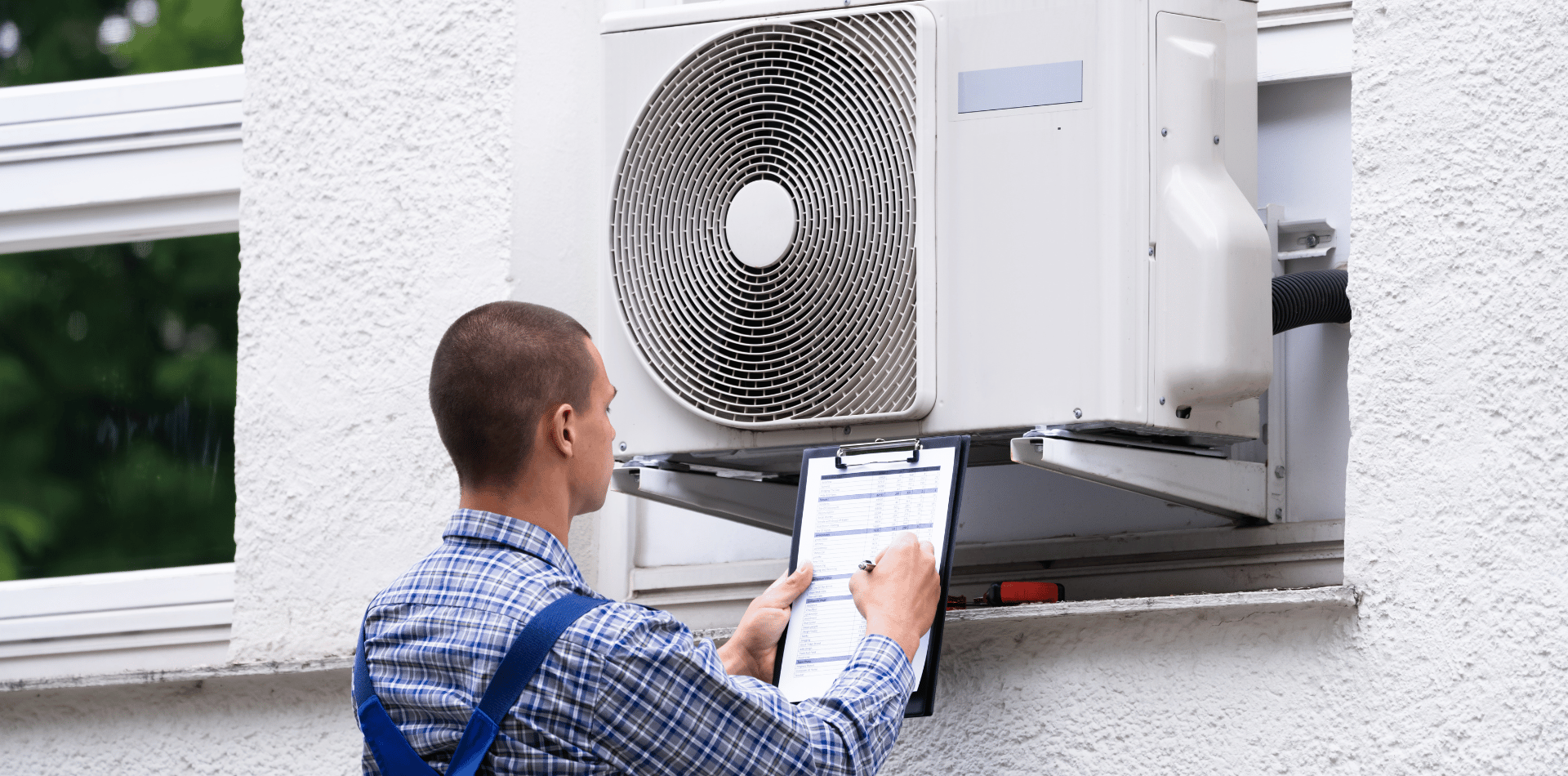How to Choose the Right Air Conditioning System for Your Home
Everything you need to know to choose the Right Air Conditioning System for Your Home

Selecting the right air conditioning system for your home is a decision that can affect your comfort, energy consumption, and wallet for years to come.
With several types of systems available, it's important to choose one that meets your specific needs.
This guide will walk you through the process of selecting the ideal air conditioning system for your home.
1. Understand Your Options
There are several types of air conditioning systems to consider:
Ducted Air Conditioning:
Ideal for cooling multiple rooms or an entire house.
These systems are efficient for large spaces but can be costly to install and operate.
Ducted Central air conditioning systems are designed to cool multiple rooms or an entire house efficiently and uniformly. They are particularly suitable for large spaces and provide a seamless cooling experience.
However, while they offer considerable benefits, they can also be costly to install and operate. Understanding the ins and outs of central air conditioning can help you make an informed decision.
How Ducted Air Conditioning Works
A ducted air conditioning system consists of a network of ducts that distribute cool air throughout the home. The system typically includes an outdoor unit (containing the compressor and condenser), an indoor unit (usually combined with a furnace or air handler), a series of ducts, and a thermostat for temperature control.
The system operates as follows:
- Cooling Process: The outdoor unit compresses and cools refrigerant, turning it into a chilled liquid. This liquid is then circulated to the indoor unit.
- Air Handling: Inside, the air handler or furnace blows air across the cold evaporator coil, cooling the air while removing humidity.
- Air Distribution: The cooled, dehumidified air is then pushed through the ductwork and distributed throughout the house via vents in each room.
- Thermostat Regulation: The thermostat monitors the temperature in the home and signals the air conditioning system to turn on or off to maintain the desired temperature.
Advantages of Ducted Air Conditioning
- Uniform Cooling: Ducted systems provide consistent temperatures throughout the house, eliminating hot spots and ensuring comfort in all rooms.
- Improved Air Quality: These systems often include air filtration, which reduces dust, pollen, and other airborne pollutants, improving indoor air quality.
- Convenience: Ducted air conditioning is controlled by a single thermostat, making it easy to set and maintain the desired temperature.
- Aesthetic and Practical Appeal: Unlike window or portable units, ducted systems are almost invisible from the inside of the home and do not take up any living space.
- Increased Home Value: Homes with central air conditioning typically have a higher resale value.
Considerations and Costs
- Initial Investment: The cost of installing a ducted air conditioning system can be significant, especially if your home requires new ductwork. Installation costs vary widely based on the size of your home, the type of system, and the complexity of the installation.
- Operating Expenses: Ducted air conditioners use a substantial amount of electricity, which can lead to higher utility bills, particularly in regions with hot climates.
- Maintenance: Regular maintenance is essential to keep a ducted air conditioning system running efficiently. This includes annual check-ups by a professional, as well as regular filter changes and duct cleaning.
- Energy Efficiency: To mitigate operating costs, consider investing in a high-efficiency system. Look for models with a high SEER (Seasonal Energy Efficiency Ratio) rating. Although more expensive upfront, they can significantly lower energy bills over time.
- Zoning Systems: For enhanced efficiency and comfort, consider a zoning system, which allows you to control the temperature in different areas of your house independently.
Ducted air conditioning systems offer a blend of comfort, convenience, and efficiency, making them an excellent choice for cooling large spaces and entire homes. While the initial setup and ongoing costs can be substantial, the long-term benefits of a well-chosen system—enhanced comfort, improved air quality, and increased home value—often outweigh these investments.
By understanding your specific needs and consulting with HVAC professionals, you can select a central air conditioning system that will provide years of comfortable, efficient cooling.
Ductless Mini-Split Systems:
Ductless mini-split systems are becoming increasingly popular, especially in homes without existing ductwork.
They provide a flexible and efficient solution for heating and cooling specific rooms or areas in your home. Understanding the nuances of these systems can help you decide if they're the right choice for your cooling needs.
How Ductless Mini-Split Systems Work
Ductless mini-split systems consist of an outdoor compressor/condenser unit and one or more indoor air-handling units, connected by a conduit that houses the power cable, refrigerant tubing, suction tubing, and a condensate drain.
Here's how they operate:
- Cooling Process: Like ducted systems, mini-splits use a refrigerant to transfer heat from the inside to the outside of your home. The indoor unit absorbs heat from your home's interior and transfers it to the outdoor unit, which expels it.
- Individual Zones: Each indoor unit cools a specific "zone" or room in your home. You can have multiple indoor units connected to one outdoor unit, allowing different temperatures in different rooms.
- Remote Control: Each indoor unit is controlled independently, typically with a remote control, allowing you to adjust the temperature in each room or zone to your preference.
Advantages of Ductless Mini-Split Systems
- Flexibility for Zoning: Mini-splits offer the ability to control the temperature in individual rooms or areas, which can lead to increased comfort and energy savings since you only cool the spaces you use.
- No Ductwork Needed: Since they don't require ductwork, mini-splits are ideal for older homes, additions, or any location where installing ducts is impractical or too expensive.
- Energy Efficiency: Ductless systems are often more energy-efficient than traditional HVAC systems, partly because they avoid energy losses associated with ductwork. This efficiency can significantly reduce your utility bills.
- Quiet Operation: Mini-splits are known for their quiet operation, making them less intrusive than window units or central air systems.
- Easy Installation: The installation of ductless systems is less invasive and often quicker than that of ducted systems, although it still requires a professional.
Considerations and Costs
- Initial Investment: While ductless systems can be more cost-effective than installing new ductwork, the upfront cost of mini-split systems can be higher than that of traditional air conditioners of a similar capacity.
- Aesthetics: Indoor units are visible within the living space, which might not be appealing to everyone. However, they are sleeker and less obtrusive than window units.
- Placement: Proper placement of the indoor and outdoor units is crucial for efficiency and performance. Professional installation can help ensure that units are placed for optimal cooling and minimal visual impact.
- Maintenance: Regular maintenance, including cleaning filters and ensuring clear airflow around indoor and outdoor units, is essential for efficiency and longevity.
Ductless mini-split systems offer a versatile, efficient alternative to traditional HVAC systems, especially in homes without existing ductwork.
They provide the unique advantage of individualised control, allowing you to cool only the areas you use, which can lead to significant energy savings. While the initial cost may be higher than some traditional systems, the long-term savings and comfort can make them a worthwhile investment.
If you're considering a ductless mini-split system, consulting with a professional can help ensure that you select the right size and type for your needs and that it is installed correctly for optimal performance.

Window Air Conditioning Units:
Window air conditioning units are a popular choice for those looking to cool single rooms without the need for extensive installation processes or significant upfront investments.
They are particularly suited for renters, individuals in temporary housing, or those on a tight budget. However, while window units offer convenience and cost-effectiveness, they also come with their own set of drawbacks.
How Window Units Work
Window air conditioners are compact units designed to fit into a standard window frame. They operate on the same basic principle as other types of air conditioning systems: they remove heat and humidity from the room, expelling warm air outside and circulating cool air inside.
A typical window unit comprises a compressor, condenser coils, evaporator coils, and a fan.
Here's the process:
- Installation: Window units are designed to be installed in an open window, with the bulk of the unit outside and a sealed gap to prevent air from escaping.
- Operation: When turned on, the unit draws warm room air in and passes it over cold evaporator coils, cooling the air before pushing it back into the room.
- Exhaust: Warm air and moisture are expelled outside through the condenser coils and fan located at the back of the unit.
Advantages of Window Units
- Cost-Effectiveness: Window AC units are generally less expensive than other types of air conditioners, both in terms of initial cost and installation.
- Ease of Installation: These units can be installed without professional help in most cases, making them a good choice for immediate cooling needs.
- Flexibility: Window units can be removed and reinstalled in different windows or taken with you if you move, offering flexibility not available with more permanent solutions.
Considerations and Costs
- Efficiency and Noise: Window units are often less energy-efficient than central or ductless systems and can be noisier, which might be a concern in bedrooms or quiet environments.
- Aesthetics and Security: These units can be unsightly from both inside and outside the house and may provide an entry point for burglars if not properly secured.
- Blockage of Natural Light: Installing a window unit can block natural light and require the window to remain closed, affecting ventilation and views.
- Size and Capacity: It's crucial to choose a unit with the appropriate BTU (British Thermal Unit) rating for the size of the room to ensure efficient cooling. An undersized unit will run continuously without adequately cooling the room, while an oversized unit will cycle on and off too frequently, reducing its efficiency and ability to dehumidify the room.
Window air conditioning units can be an excellent solution for immediate, cost-effective cooling of single rooms. They are particularly suitable for small spaces, temporary living situations, or areas where central air conditioning is not feasible.
However, it's important to weigh the benefits against the potential downsides like noise, efficiency, and security concerns. When selecting a window unit, consider the size of the space, the unit's energy efficiency rating, and how it will fit into your living environment. Proper installation and maintenance are key to maximising the efficiency and lifespan of your window AC unit, ensuring it provides comfortable cooling throughout the warmer months.
Portable Air Conditioners:
Portable air conditioners offer a flexible solution for cooling individual rooms without the permanence or spatial requirements of window units. Ideal for people living in rental properties, those with restrictions on window units, or anyone needing a mobile cooling solution, portable air conditioners can be an excellent choice.
However, like all cooling systems, they come with their own set of pros and cons.
How Portable Air Conditioners Work
Portable air conditioners are self-contained, movable units that exhaust hot air and moisture from the room they’re cooling. They typically come with a window kit for venting, which must be set up properly to ensure efficient operation.
Here’s how they work:
- Air Cooling: The portable unit pulls in warm room air, cools it by passing it over a cold evaporator coil, and then circulates the cooled air back into the room.
- Moisture and Hot Air Removal: As the unit cools the air, it also removes moisture (which is collected in a tank or drained through a hose) and expels hot air outside through an exhaust hose fitted to a window.
- Venting: Proper venting is crucial. The hot air must be directed outside the room via the exhaust hose, typically through a window, sliding door, or through a hole in the wall.
Advantages of Portable Air Conditioners
- Mobility: One of the biggest advantages is their mobility; they can be moved from one room to another, targeting cooling where it’s needed most.
- Installation: They are relatively easy to set up and don’t require permanent installation. Most units come with a window kit for quick setup.
- Versatility: Portable units can be used in various settings, including homes without traditional windows or spaces where window units are not an option.
Considerations and Costs
- Space and Aesthetics: Portable units can take up floor space, which might be a consideration in smaller rooms. They are also visible in the living space, which may not suit all decor styles.
- Venting: While portable air conditioners are easier to install than window units, they still need to be near a window or another outlet for venting, which can limit their placement.
- Efficiency and Noise: They may be less energy-efficient than other types of air conditioners and can be noisier, which could be disruptive depending on the unit and the room’s acoustics.
- Maintenance: Regular maintenance, including draining collected moisture and cleaning filters, is essential to keep the unit functioning efficiently.
Portable air conditioners provide a versatile and convenient cooling solution, especially for temporary setups or where traditional air conditioning systems are impractical.
While they offer the advantage of portability and ease of installation, considerations such as floor space, noise, and efficiency should be taken into account. When selecting a portable air conditioner, consider the size of the space, the unit’s BTU rating, and any additional features that may be beneficial, such as programmable timers or remote controls.
Proper maintenance and correct installation, particularly regarding the venting system, are crucial to ensure that the unit operates effectively and keeps your space comfortably cool.
Understanding the advantages and limitations of each type will help you narrow down your choices.
2. Consider Your Space
The size and layout of your home play a crucial role in choosing the right system:
- Square Footage: The size of the area you need to cool will determine the capacity of the air conditioning system required. Generally, you'll need about 200 BTU (British Thermal Units) per square metre.
- Room Characteristics: Consider ceiling height, sunlight exposure, insulation quality, and window size, as these factors will influence the cooling capacity needed.
- Existing Ductwork: If your home already has ductwork, a central air conditioning system might be the most economical choice. If not, ductless systems or window units could be more feasible.
3. Energy Efficiency
Energy efficiency is a critical factor in choosing an air conditioning system. Look for the SEER (Seasonal Energy Efficiency Ratio) rating:
- The higher the SEER rating, the more efficient the system.
- As of 2024, a good SEER rating in Australia is 8 to 10.
- Although higher SEER units can be more expensive upfront, they can provide significant savings on energy bills over time.
The Seasonal Energy Efficiency Ratio (SEER) is a measure used to assess the efficiency of air conditioning and heat pump systems. It represents the ratio of the cooling output of an air conditioner over a typical cooling season, divided by the energy it uses in Watt-Hours.
Essentially, SEER is a metric used to quantify how much cooling a system can provide per unit of energy consumed.
Understanding SEER
- Calculation: SEER is calculated by taking the total cooling output (measured in British Thermal Units, or BTUs) during the cooling season and dividing it by the total electrical energy input (measured in watt-hours) during the same period. The result is a ratio that indicates the efficiency of the air conditioning unit.
- Seasonal Performance: Unlike other efficiency metrics that might measure performance at a single, fixed point, SEER represents an average over the entire cooling season, taking into account variations in temperature that can affect the system's efficiency.
- Higher SEER Ratings: A higher SEER rating means higher energy efficiency. For example, a system with a SEER rating of 16 is more energy-efficient than a system with a SEER rating of 10. This means that with all other factors being equal, the higher SEER unit will consume less electricity to provide the same amount of cooling.
Importance of SEER
- Energy Savings: Higher SEER ratings are indicative of more energy-efficient units. While these units might have a higher upfront cost, they can lead to significant savings on energy bills over time, making them a cost-effective choice in the long run, especially in regions with hot climates or where the air conditioner is used extensively.
- Environmental Impact: More efficient air conditioners with higher SEER ratings use less energy, which can lead to reduced greenhouse gas emissions and other environmental benefits, as less fossil fuel is burned to generate the electricity needed to run them.
- Regulatory Standards: The Greenhouse and Energy Minimum Standards Act 2012 (GEMS Act) sets minimum SEER ratings for air conditioning units sold in Australia. These standards are part of efforts to improve energy efficiency and reduce environmental impact. These standards are subject to change, so it's important to check the current requirements if you're purchasing a new system.
Considerations
When choosing a new air conditioning system, consider the SEER rating as part of your decision-making process, but also take into account factors such as the size of your home, your local climate, and your budget.
While a higher SEER rating generally indicates a more efficient unit, the best choice for your needs will depend on a variety of factors, including initial cost and expected usage.
Additionally, to maintain the efficiency of your system, regular maintenance is essential regardless of its SEER rating.
4. Budget Considerations
Budget is more than just the initial purchase price; it also includes installation, maintenance, and operating costs:
- Initial Cost: Compare the upfront costs of different types of air conditioning systems. Remember that higher efficiency units and professional installation may cost more initially but can save money in the long run.
- Operating Costs: Consider the energy efficiency of each system to estimate future utility bills.
- Maintenance Costs: Regular maintenance is essential for keeping an air conditioning system running efficiently. Consider the cost and frequency of potential maintenance needs.
5. Professional Consultation
Consulting with a professional HVAC contractor can provide valuable insights:
- They can perform a detailed assessment of your home to recommend the most suitable system.
- They can ensure that the system is correctly sized for your space. An improperly sized system can lead to inefficiency and discomfort.
- They can provide an estimate for the total cost, including installation.
6. Additional Features
Consider whether you need any additional features:
- Programmable Thermostats: Can improve energy efficiency by allowing you to set the temperature according to your schedule.
- Air Quality Features: If you have concerns about indoor air quality, look for systems with built-in air purifiers, dehumidifiers, or HEPA filters.
- Smart Home Compatibility: Some modern systems can be controlled remotely using a smartphone, which can provide additional convenience and efficiency.
Choosing the right air conditioning system for your home involves considering your space, assessing your needs, understanding different types of systems, evaluating energy efficiency, and determining your budget.
By taking the time to research and consult with professionals, you can find a system that not only keeps your home cool and comfortable but also operates efficiently and fits your budget.
Remember, the right air conditioning system is an investment in your home's comfort and your family's well-being.
You might also like





